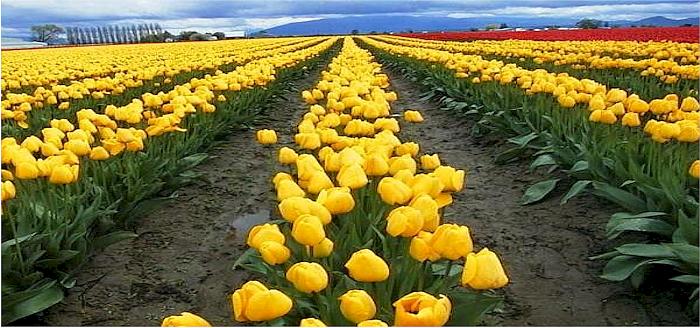
Sea of flowers
While the Netherlands has traditionally dominated the fresh cut flower industry, occupying more than half the total global export volume, a growing number of new entrants have quickly established themselves as major players in the scene. Backed by an exponential growth in world demand due to rising income levels and consumer preference for fresh blooms, the booming industry has generated economic miracles in some of the most impoverished communities around the world.
As the third-largest exporter of cut flowers in the world, Ecuador’s floriculture industry employs some 103,000 people and accounts for 9% of the country’s non-petroleum exports. Most popular amongst its many flower exports is the famed Ecuadorian rose, which is known for its long stem, large bulb and vibrant colors thanks to Ecuador’s prime geographical location on the Equator. In fact, Ecuadorian roses enjoy such great demand from countries like Russia and the United States that its production provides lucrative jobs for thousands of females in poor, rural areas, fostering a social revolution with empowered and financially independent women.
Known as The Flower Effect, this remarkable transformation was kickstarted by the U.S. and Ecuadorian governments in the Andean Trade Promotion and Drug Eradication Act (ATPDEA). The program aimed to lower trade barriers in strategic sectors while allowing Ecuador to exploit its comparative advantage in industries such as floriculture so as to divert labour from the rampant drug trade. Over the years, the flower industry has also responded to criticism of its work conditions and environmental impact by raising its minimum wage to one of the highest in the region, while farmers have also become more conscious of using harmful pesticides and fertilizer that may pollute waterways. With its unique climate conditions and constant innovation in creating new breeds of premium roses, global investors are confident that Ecuador’s floriculture industry will continue to thrive in the long term.
The rural Yunnan province in southwest China has also seen more than 20,000 families lifted out of poverty since the 1990s, when a concerted effort by the provincial government with support from foreign experts saw farmers switch from planting subsistence crops with a very low profit margin to higher value-added cut flowers. Early involvement of the International Trade Centre was critical in providing the budding industry with much needed technical expertise and ensuring that its exports meet the highly stringent quality standards of the global market. Today, the area’s flower production value is estimated at US$ 415 million and accounts for 50% of the Chinese domestic market. For the farmers of Yunnan, their entrepreneurial spirit and willingness to embrace collaboration with foreign partners promises a rosy outlook for the coming years ahead.
Ecuador and China are only two examples in a long list of other nations from Ethiopia to Kenya that have benefited enormously from the Flower Effect, which has propelled the remarkably rapid and successful diversification of their economies towards a non-traditional export product. With the significant employment generated for rural, impoverished communities, the fresh cut flower industry is truly a billion-dollar treasure trove of economic opportunity that brings not only prosperity to the exporting nation but an ever delightful supply of fragrant blooms to countless homes around the world.
Written by: Grace Hu, May 2018
